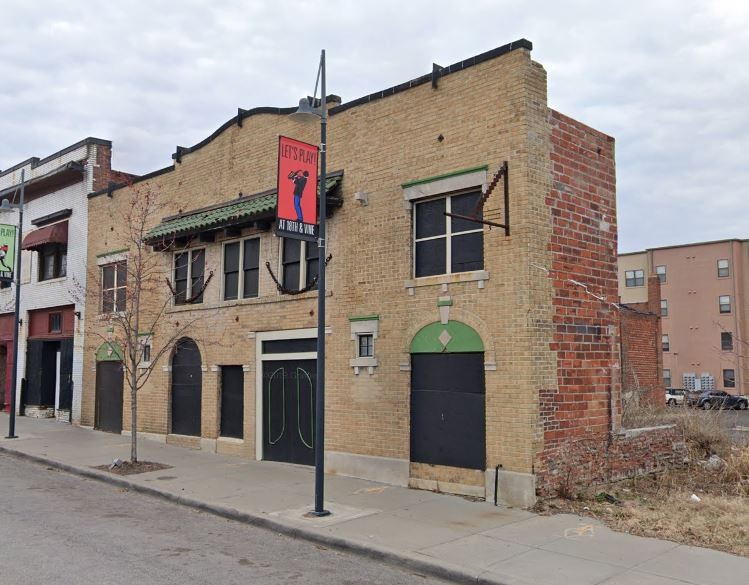Cherry Blossom Club
Introduction
Author-Uploaded Audio
Introduction to the building's history by Michael Patton; recording created by Black Archives of Mid-America
Text-to-speech Audio
In 1933, the old Eblon Theater was remodeled into a nightclub and opened as The Cherry Blossom Club. Located at 1822 Vine Street this club was one of Kansas City's most popular destinations for Jazz. The club was also where many influential jazz musicians made a name for themselves, including the great Count Basie and Bennie Moten.
Images
Cherry Blossom Club

Backstory and Context
Text-to-speech Audio
In 1933 the remodeled Eblon Theater was opened as the Cherry Blossom Nightclub. On opening night George E. Lee’s band played the Cherry Blossom theater to a crowd of patrons. Soon after, the band was replaced by Bennie Moten’s band. But after a few months at the Cherry Blossom, Bennie was ready for a new venue, but his orchestra wanted to stay.5 The band voted Moten out as band leader and replaced him with Count Basie.5 The Cherry Blossom theater advertised their new band under the name Count Basie and the Cherry Blossom Orchestra. Though Basie had been using the nickname Count among friends since his time at the Eblon, this was the first time he was advertised as “Count Basie”5. Basie would be associated with the Cherry Blossom Club until it was shut down in the 1940's. In 1944, a new club called the Chez Paree opened in the same location giving the building its final piece of history where it was home to Kansas City jazz legend Jay McShann.2
The Cherry Blossom was also home to a very famous battle of the bands involving Coleman Hawkins, the king of the tenor sax . One night late in 1933, Hawkins stopped by the Cherry Blossom theater where Count Basie held a late-night jam session.2 Hawkins was known not to play in these musical battles. As the reigning king of the tenor sax Hawkins had nothing to gain in playing in these musical battles and everything to lose. But on this one night Hawkins decided to join the battle. Egged on by his fellow musicians, Hawkins went up to perform a legendary set. Count Basie described the battle, “All of those other saxophone players were up there calling for their favorite tunes, and then Hawk went up there, and he knew all of the tunes, and he started calling for all of those hard keys, like E-flat and B-natural.”2The battle raged through the night. Around 4 A.M. all of the pianists were too tired to play, but Hawkins and the horn players were still playing on. They woke up pianist Mary Lou Anderson and brought her to the Cherry Blossom so that the battle could continue. William’s remembers being waken up by Ben Webster, “he was saying, “get up, pussycat, we’re jammin’ and all the pianists are tired out now. Hawkins has got his shirt off and is still blowing.” 2But by the end of the night, Hawkins had met his match. Lester Young played in a relaxed style that contrasted greatly with the forceful tone of Coleman Hawkins. Hawkins tried repeatedly to outplay Young but by the end of the night he was forced to give up and head to Saint Louis for his next gig.2 Lester Young’s victory over Hawkins would become a legendary moment in the history of Kansas City Jazz.
Sources
1"Theatre Is Only One In City Owned By Colored People" Newspaper article; Kansas City Call; October 26, 1923. https://ibrary.umkc.edu/spec-col/local627/sources/shaw/eblon/haddix-eblon-theater-article2.htm
2Driggs, Frank, and Chuck Haddix. 2005. Kansas City Jazz : From Ragtime to Bebop--a History. Oxford University Press. https://search-ebscohost-com.proxy.library.umkc.edu/login.aspx?direct=true&db=cat07616a&AN=umk.b5199034&site=eds-live&scope=site.
3Pearson, Nathan W. "Goin' to Kansas City". University of Illinois Press, 1987. EBSCOhost, https://search-ebscohost-com.proxy.library.umkc.edu/login.aspx?direct=true&db=cat07616a&AN=umk.b1999332&site=eds-live&scope=site.
4"Musicians Local 627 and the Mutual Musicians Foundation: the Cradle of Kansas City Jazz" LaBudde Special Collections & Marr Sound Archives, http://library.umkc.edu/spec-col/local627/text/shaw/eblon.htm.
5William J 'Count' Basie (1904-1984) Biography". Count Basie Center for the Arts,https://thebasie.org/countbasiebio/
Google Maps
